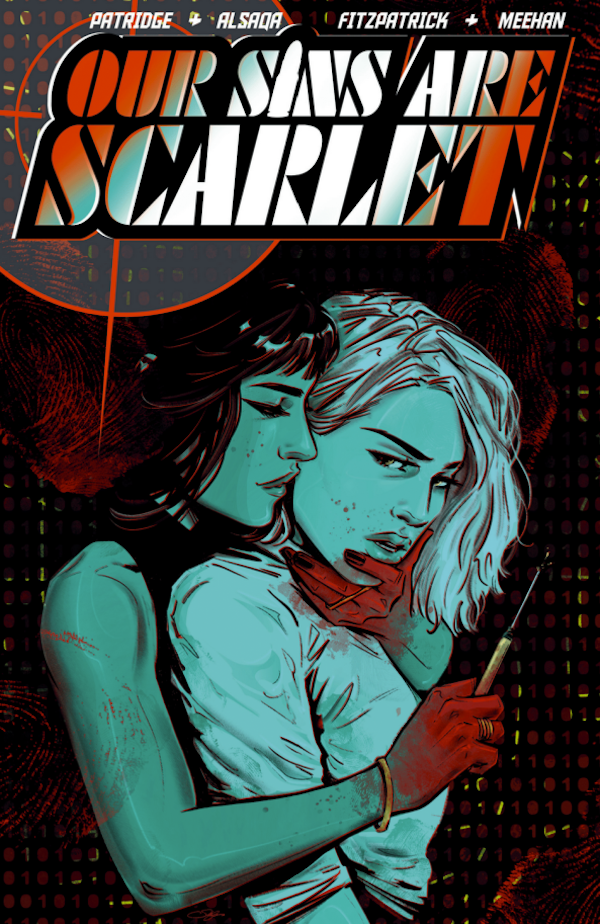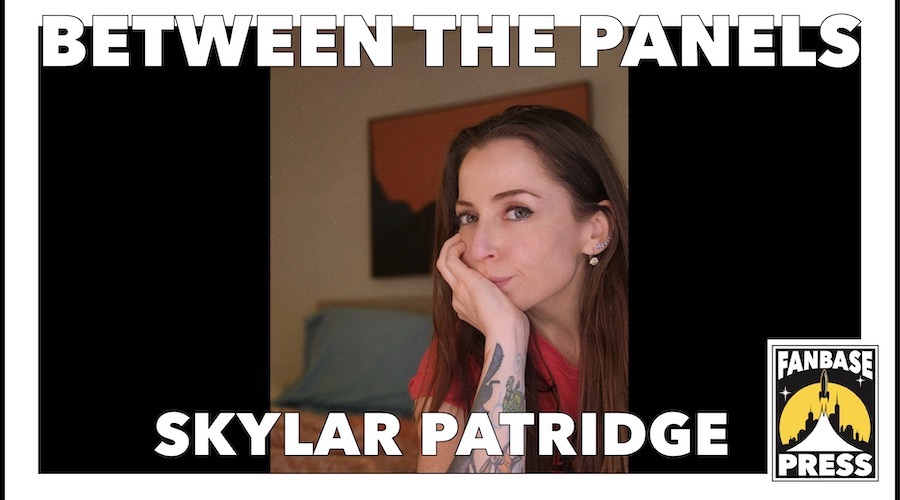“Between the Panels” is a monthly interview series focusing on comic book creators of all experience levels, seeking to examine not just what each individual creates, but how they go about creating it.
Imagine being a kid in the pre-internet-as-we-know-it days, growing up with limited access to comics but savoring what you could get your hands on. Now imagine going from that to being a professional comic artist with credits from DC, Image, Marvel, IDW, and other publishers on your resume. It just so happens there’s someone whose story is exactly that.
First off, the basics…
Your specialties (artist/writer/letterer/inker/etc.): Artist/Writer
Your home base: New Mexico
Website: skylarpatridge.com
Social Media
Instagram: @Skyepatridge
Twitter: @SkyePatridge
Bluesky: skyepatridge.bsky.social
Ko-fi: @Skylarpatridge
Fanbase Press Contributor Kevin Sharp: What do you enjoy about working in comics? For an artist who could ply their trade in a number of fields, what about this medium keeps you coming back for more?
Skylar Patridge: The visual storytelling of comics. I don’t really remember a time in my life when I didn’t have pencil and paper within arm’s reach. It was actually the way my parents kept me occupied whenever there was any kind of formal function where I needed to be on good behavior, haha. And even then, the doodles on the paper placemats or table cloths were always some kind of story.
As I got older, that inclination never really went away. It was never enough to just write a story or draw a picture, I needed there to be both. That’s comics. What’s more, they have the flexibility of being both collaborative and solitary. You can make them with a team, but you can also make them alone. As a kid who grew up in a very rural place without a lot of resources, I’ve always loved that accessibility.
KS: Do you have earliest memories of seeing comics? Not necessarily the first you ever read, but roughly when would they have entered your life.
SP: The first comic I remember actually getting was Superman – one of the times he died. I was way too young for the particular story in retrospect, but I’m sure I begged and annoyed my parents until they got it for me. But my real introduction to comics was actually the result of watching cartoons. I think a lot of millennial creators will tell you they were the product of the X-Men and Batman animated series of the ’90s, and that was very much my experience. Those shows introduced me to the world of comics, and it is a world to say the least. Where the shows stopped, the comics continued on and told any number of different stories, which to my kid self, felt like a cheat code. I read a lot of cape stories early on, specifically X-Men and Batman, and I still have a very, very soft space in my heart for them.
I always gravitated toward the characters who had the more frightening abilities like Rogue, Marrow, Chamber, etc. that kind of ostracized them, even among other mutants. I’m not gonna unpack what that particular detail says about me, but I was and still am very captivated by stories of outsiders and underdogs.
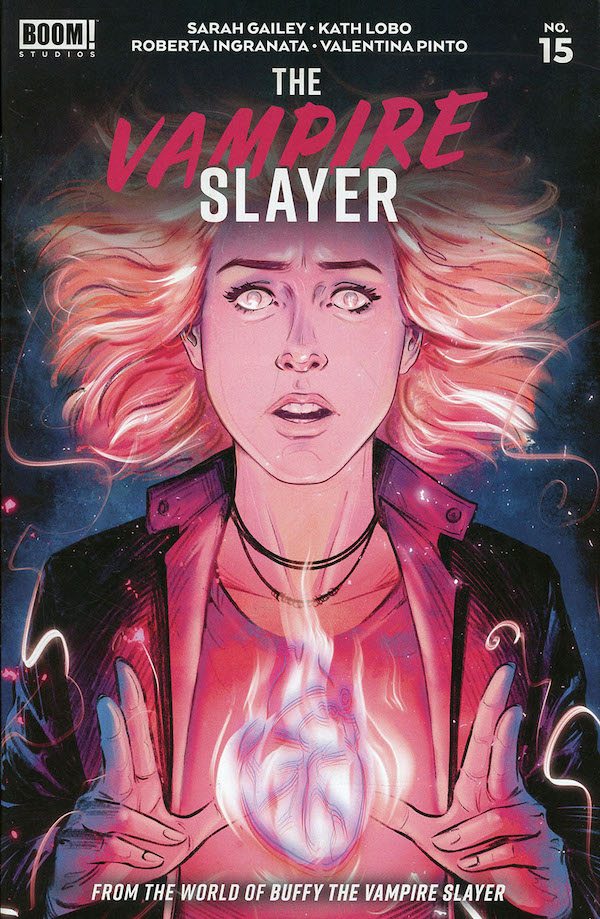
KS: Were comics available enough in your area to you to be able to follow favorites with any regularity?
SP: My access to comics was extremely limited. That usually meant picking up what I could at comic or hobby shops on family trips, so I very rarely got to follow storylines all the way through. When I got a little older, and internet became a household fixture, I started using eBay to track down comics and runs I wanted. So, I was a pretty determined comics reader from the start.
KS: Once you were able to differentiate among different artists and art styles, who were some names that especially appealed to you?
SP: Early on, Jim Lee and Adam Kubert were who I thought of when I thought of comics, and their work was very foundational for me growing up. But I credit Wizard Magazine (R.I.P. GOAT) with introducing me to Phil Noto, Adam Hughes, Cary Nord, Josh Middleton, Terry and Rachel Dodson, among others, who all became very important touchstones for a young artist living in the middle of nowhere.
KS: At Fanbase Press, our #StoriesMatter initiative endeavors to highlight the impact that stories can have on audiences of various mediums and about the way a reader can find an important story at just the right time. What was a comic book story that had a significant impact on you when you were younger?
SP: Beautiful Killer, a mini-series by Jimmy Palmiotti and Phil Noto from a now-defunct indie publisher, Black Bull. It was one of the first non-cape stories I read that had me by the throat and fueled my burgeoning love for espionage stories, while also looking very different from all the comics I had seen before. Noto’s work was gestural, sketchy and painterly, and that was revolutionary to me not just as a young reader, but a young artist, as well. It’s the book that made me want to make comics professionally and was actually very foundational for me with Our Sins Are Scarlet, the book I’m currently developing with Jordan Alsaqa.
KS: In hindsight, can you pinpoint what it was about that story that made it right for who you were as a reader at the time?
SP: I think I was at the right age for it. I was a young teen and looking for more mature stories featuring female leads who weren’t overly sexualized. And I had always been drawn to spy stories and characters with blurry morals. I think I was also a young artist looking for inspiration and artistic voice, and visually, Beautiful Killer challenged my assumptions of what comics could look like.
Little side story, I actually met Jimmy and Phil some years ago and gushed to them how important this book was to me. I think they were both a little surprised it was this book because, I mean, look at their bodies of work, haha. But I always think about this now as a creator myself – that you never know what could inspire the next person. I’m not sure I’d be here without this little comic about contract killers.
KS: You mentioned always having pencil and paper handy as a kid. What kinds of art did you used to make generally and did you ever experiment making your own comics?
SP: If I was drawing, I was happy. It was almost always a story of some kind, even if it was just one image. When I was very young, I drew mostly people and animals. I remember at one point not actually knowing how to write yet, but I wanted to show that two people were talking, so I just drew lines coming out of their mouths. So for a while, all my drawings just looked like people yelling at each other. As I got older and started watching cartoons and reading comics, I started to draw the characters I liked into my own stories. I gravitated to comics very early because it made the most sense to me as a young artist who wanted to tell stories.
KS: As far as your favorite artists, were those folks people you aspired to be as good as, or did they seem totally out of reach in that regard?
SP: Both, I think. They were — and still are — artists I looked to for inspiration. And they still feel totally out of reach, haha.
KS: Can you recall when you had the idea for an actual career in the arts instead of just having it as a hobby? Was there a moment of inspiration or was it something you’d had in mind for a long time?
SP: I wanted a career in the arts from the time I learned that there were careers in the arts. I had no idea exactly what I wanted to do, but I knew I wanted to draw, paint, etc. and I was very, very fortunate that I had a supportive foundation growing up. Both of my parents and my grandmother encouraged my art-making and never made me feel foolish for pursuing it. I was also an incredibly willful kid and wasn’t easily dissuaded. I’m sure my parents had concerns as all parents do when their kids pursue unpredictable careers. But I also think they could see it through the same lens I did — why wouldn’t I do the thing that comes most naturally and that gives me the most satisfaction? So, it was able to remain a fixture throughout my life, even when I wasn’t working in creative fields.
KS: You got a degree in Art & Design. Did you have a specific vision for what your post-college career would look like, as far as what type of art field(s) you were interested in?
SP: Absolutely not haha. I, like a lot of people fresh out of school, had NO idea what I wanted to do with my degree or if I even could do something with it. I considered graphic design, which was my concentration, but at the end of it all, it didn’t feel like the right fit. Then, I had a fleeting moment of practicality after graduating where I considered going to grad school and getting a degree in museum studies. I thought maybe I could make a career out of art in a less hands-on way. But then I came to my senses — I did not come to my senses — and pursued work in the culinary world. That’s a whole other story, but to make a long story short, I didn’t know what I was doing, and I took a lot of wrong turns to wind up here.
KS: Were comics ever a consideration as far as different art options?
SP: In all honesty, I didn’t think I could have a career in comics until well into adulthood. I had worked all manner of jobs, but it wasn’t until I happened to meet the right people at the right time that things began clicking into place for me. That’s not to say it happened smoothly or quickly. Comics, as with most creative fields, is a long game of trial and error before you find your footing. Sometimes, you get lucky early on, but most often, it’s continuing to do the work and refusing to go away that gets you where you want to go.
KS: Tell us about your first pro comics job and how it materialized.
SP: I believe my first pro job was actually for a book with Vita Ayala and Matt Rosenberg at Black Mask. It wound up not happening, but it was my first real interior art job with a big kid contract and everything. And I think that came about from Tank Girl fan art. You can never really predict what will be the thing that gets people’s attention, so I always encourage artists to make the fan-art and the passion projects. Your voice and enthusiasm ring clearest when you’re making work you care about. And even though that project didn’t wind up happening, it was an important springboard for me, and Vita and I have remained friends and collaborators ever since.
Also, it’s kind of funny to say Tank Girl changed my life!
KS: You’ve set me up to have to ask: When would you have first been exposed to Tank Girl? Comics or the movie?
SP: It was definitely the movie. I remember watching it on cable at my grandmother’s, and like so many of the cable movies I watched as a kid, I was definitely too young. I remember being terrified of the Rippers and when they reveal how the Water & Power Corp. have been getting water — no spoilers for the 29-year-old movie. But I still loved it, and it instilled an early love of the character. I’m not sure I own ALL of her comics, but it’s probably close.
KS: Since that Black Mask project never saw the light of day, what was your first gig that did end up happening?
SP: I believe it was Relics of Youth with Vault Comics. It was a fun Young Adult adventure story, and I appreciate them taking a chance on a newbie.
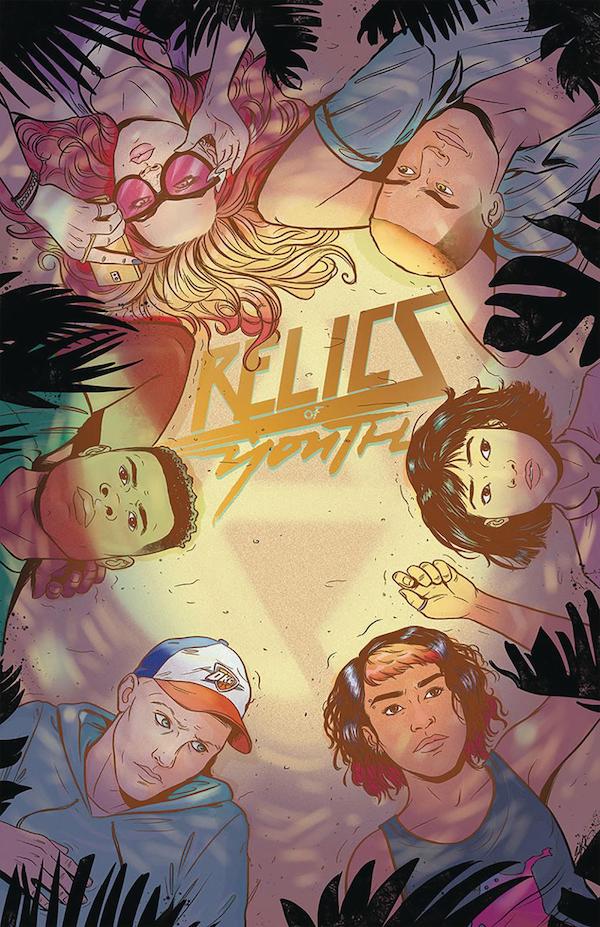
KS: These days, do you have a typical daily/nightly work routine? Is there a time of day or circumstances where you feel you’re at your most productive?
SP: Against my own best interest, I’m a night owl, and I find that I’m most productive during the witching hours. I’ve tried and tried to turn myself into a morning person, but I do all my best thinking and working when most everyone else is asleep.
KS: Thumbs up or thumbs down: listening to music or other background noise while you work? If thumbs up, what might we hear on the Skylar playlist?
SP: Thumbs up. I love music just as a fixture in my life, but I’ve found it especially useful in helping me tune out distractions, get out of mental fog, and focus. I usually pick my music depending on the work. Page layout and concept work usually wind up being a lot of electronic music with minimal lyrics like Odesza, Underher, Lonely in the Rain. Something about it just agrees with my brain when I have to make a lot creative decisions.
With less mentally taxing projects, I tend to branch out and love finding new music. But Blood Red Shoes, Starbenders, Jadu Heart, Sleigh Bells, Janelle Monae, Florence + The Machine, Yoke Lore, and Rina Mushonga among others, are usually always playing at some point.
At night, I shift to background noise and usually opt for old television shows. I’m a sucker for the Twilight Zone and old detective shows like Mannix and Columbo.
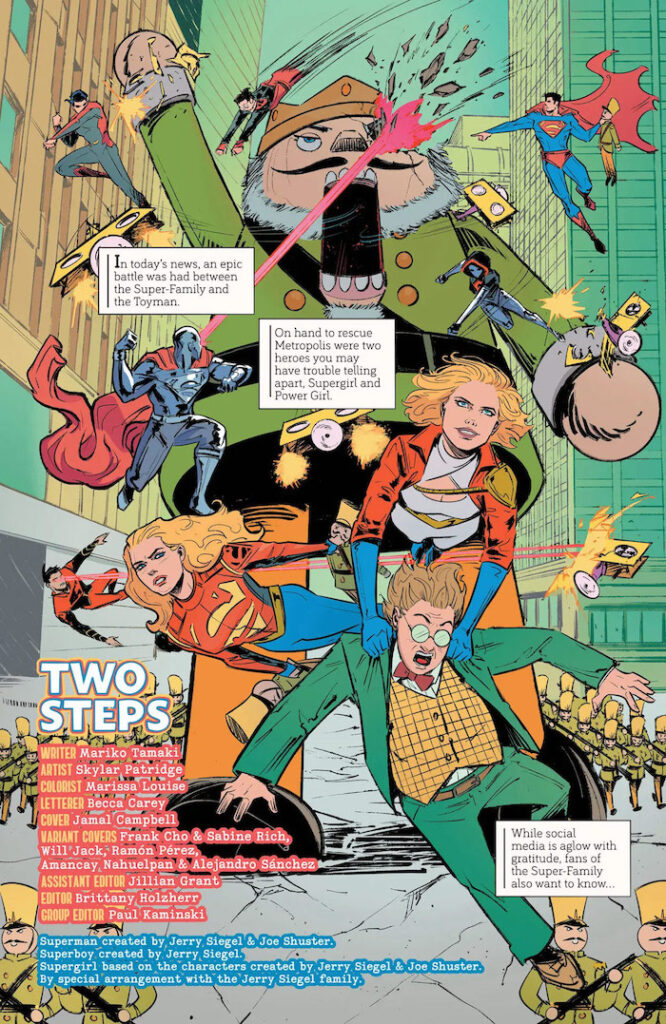
KS: Hypothetical time: You can spend a day in the studio of any artist from the history of comics, asking questions, watching them work, sharpening pencils, etc… Who are you gonna lurk around and what would you hope to get out of it?
SP: Alex Toth and Ramona Fradon. In my mind, they feel like two sides of the same coin in how they approached their work — Toth being the serious perfectionist and Fradon the playful creative. They both had long careers, drawing even in their final years, and I think if I could glean even a fraction of their skill and creative wisdom, I’d be richer for it.
KS: We’ll allow the double answer cheat. Now, let’s imagine a Comic Book Hall of Fame and you get to induct a title you feel represents the medium at its very best — well-known or obscure. What’s getting your plaque?
SP: The first to come to mind is Persepolis by Marjane Satrapi for its earnest embrace of the medium to not only tell a captivating coming-of-age story but also educate on modern Iran and an important time in its history. Secondly, Russian Olive to Red King by Kathryn & Stuart Immonen. I think it’s a technical beauty, filled with the compelling scenery and colors of two divergent stories longing to find one another again.
KS: To wrap up, please let readers know what you have out and what to be on the lookout for the rest of ‘24.
SP: Our Sins Are Scarlet, an erotic spy thriller I created with Jordan Alsaqa, is actually at the printer now, and we’re looking to have that in readers hands around the end of summer. In October, I’ll be drawing the Supergirl story with Mariko Tamaki for Action Comics, starting with issue 1070.
And I think it will be out/launched by the time this interview is live, but I’ll have a short story featured in Drawing Blood #4, written by Amanda Deibert, called “GTFO Girl,” a fun post-apocalyptic story-within-a-story I hope readers will like!
